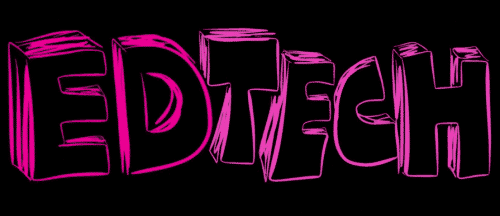Last spring Katie Benmar wrote an editorial, My Favorite Teachers Use Social Media: A Student Perspective, in Education Week. Educator Howard Pitler, a frequent edCircuit contributor, shared his thoughts after reading David Greene’s perspective last week.
By Howard Pitler
It isn’t often that EdWeek publishes a commentary written by a high school student, so when they do, it’s important to pay attention. In Katie Benmar’s commentary, My Favorite Teachers Use Social Media: A Student Perspective, Ms. Benmar calls to our attention the huge chasm that exists between the adult understanding of social media and the reality of a student’s world.
We adults think social media is mostly looking at family pictures and silly cat videos on Facebook. Most of us are unaware of the apps a typical student uses to engage with their peer group. If I mention Kik or Tumblr to a group of teachers many are wondering if I have suddenly forgotten how to spell. Talking about Instagram, Vine, and Whatsapp engenders a blank look. While many adults now have Facebook and some even have Twitter, they often use it as one-way communication. I hear comments like, “I need to get on Facebook to see what new pictures my kids have posted of my grandkids.”
At a recent workshop I asked the 50 assembled educators how many had Twitter accounts. Less than half raised their hands. I then asked how many used Twitter as their primary professional learning network (PLN) and the number of hands dropped to single digits. When I asked my 50 workshop participants to post to Twitter during the workshop and tag me in their posts, the response over the next three hours was underwhelming. One teacher even proudly and defiantly stated she didn’t have a Twitter account and never planned on adding one because “real learners rely on printed material to learn.”
One of Ms. Benmar’s assertions is that very few of her teachers leverage the power of social media. She writes, “To succeed, we are told, we must do our homework and study for tests. This is true, but teachers often fail to give sufficient consideration to one important roadblock: social media.” I believe there are two main reasons for this.
First, teachers see social media as a distraction from learning rather than a powerful tool for learning. Why would we feel otherwise? For many of us social media is just that. It’s a distraction or diversion from the real work of life. When they see a cell phone out during class they assume the student is off task. If a student dares snap a picture of a presentation slide or project they risk losing their phone or even being sent to the office.
Because adults don’t learn this way – students can’t either.
It’s just not how we define learning and rigor. I remember being in a staff meeting, not that long ago, when we were all directed to close our laptops and put away our phones so we could pay better attention.
A second and more powerful reason for the disconnect is that as adults, we just don’t understand and appreciate the magnetic pull of social media. We need to remember the pressure we felt in middle and high school for peer acceptance. I remember the pecking order in the high school cafeteria. I knew who the “cool kids” were in part because of where they sat and with whom. My social group was the band geeks. I looked up to the jocks and cheerleaders, but at least I wasn’t in the AV or chess club. Now magnify that pressure by a magnitude of 1000 and you can begin to see the power social media plays in the lives of today’s kids.

If they post a picture on Instagram and it doesn’t get immediate likes their status has been diminished. It doesn’t matter they don’t really know all of the people who liked the picture – it only matters that it was liked or commented on. It makes the student feel important, popular, and well liked. After-school conversations today revolve first around social media, who is popular, who just posted something that got a lot of likes and who said what about whom online, and then secondly about school (if there is time).
Teachers tell me that kids today need to put away their #@%#$ iPhones and get their heads into their books instead. They ignore the current student reality and by doing so, the power it might have for learning. When a student looks at her Instagram or Vine account between classes she could be seeing classroom related posts mingled in with her friends’ pictures. She could be leveraging Whatsapp and its group messaging feature to engage with peers and bring into the discussion voices that are mostly silent in the classroom. She could be using hashtags on Twitter to build discussions between students from different classes and even schools.
Teachers need to adopt the same growth mindset in themselves they want in their students. Try announcing to your students that you want to learn how to use Instagram and need their help in learning how to post school-related pictures.
Diving into social media in earnest seems daunting, just like diving off the high dive seemed in our youth. Eventually you decide to take the plunge and find out you can do it and that people respect you for the effort.
In some schools another conversation has to occur first. Too many schools have policies that prohibit cell phones in students hands in the classroom, prohibit teachers from communicating with students via social media, and even prohibit teachers from collecting student email address or cell numbers. We punish the bad behavior of a very small number of teachers by treating all teachers as potential criminals.
I will end this by quoting the end of Ms. Benmar’s commentary. She writes, “I hope that educators will consider experimenting more with technology and social media in their classrooms in a way that will be intellectually challenging to students. Believe me, your students will appreciate it, even if not every attempt is successful.”


